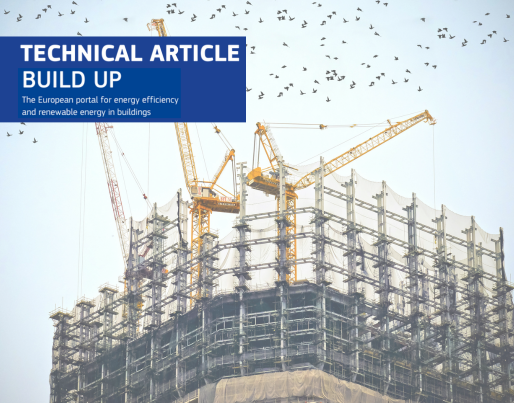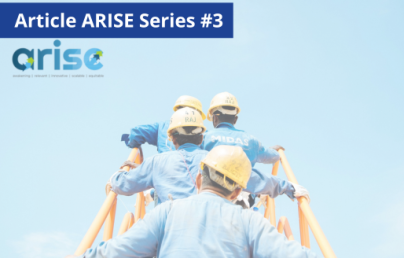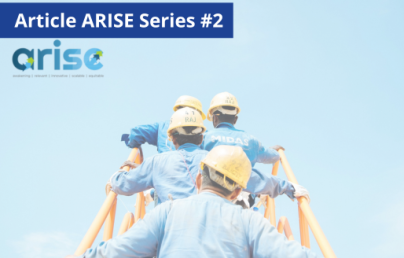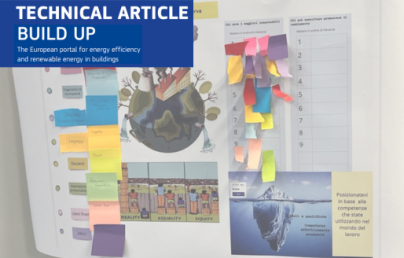BUILD2050: Shaping Europe's Zero-Carbon, sharing knowledge for both students and professionals

BUILD2050: Shaping Europe's Zero-Carbon, sharing knowledge for both students and professionals
Authors
Mohammad Abdollah – PhD candidate- Politecnico di Milano
Rossano Scoccia – Tenured researcher (RTT) Politecnico di Milano
Anna Chiara Benedetti – Adjunct professor Universita di Bologna
Cecilia Mazzoli - Junior assistant professor Universita di Bologna
Maria Koukou – Assistant professor National and Kapodistrian university of Athens
Joanna Aleksiejuk-Gawron – Assistant professor- Warsaw university of life sciences
Susana Lucas – Adjunct professor Politecnico Setubal
(Note: opinions in the articles are of the authors only and do not necessarily reflect the opinion of the EU).
Introduction
In an era where the impacts of climate change and environmental degradation are becoming increasingly evident, the European initiative BUILD2050 emerges as a beacon of innovation and sustainability in the construction industry. With a clear vision for the future, BUILD2050 is committed to transforming the way buildings are designed, constructed, and operated across Europe, aiming for a significant reduction in carbon emissions and a shift towards healthier living environments. This initiative aligns with the European Union's ambitious goal to decarbonise the economy by 2050, recognising the vital role that buildings play in achieving this target.
At the heart of BUILD2050 lies a dedication to fostering interdisciplinary learning and innovation. By developing new, continuously updated courses with a pan-European scope, BUILD2050 seeks to equip professionals in the construction sector with the skills and knowledge necessary to lead the industry towards a sustainable and regenerative future. The initiative not only emphasises the importance of nearly zero-carbon buildings but also champions the enhancement of health and well-being for occupants, alongside a positive contribution to the natural environment.
Through a collaborative network of European partners, including esteemed academic institutions and industry stakeholders, BUILD2050 is setting new standards for the construction, renovation, and operation of sustainable buildings. Its integrated and transnational training approach is designed to share experiences and methodologies, creating a unified path towards a greener, healthier, and more sustainable building sector by 2050 [1].
Project goals and objectives
BUILD2050 is a European initiative that aims to foster the development of sustainable and healthy building practices for the future. Our mission aligns with the European Union's goal to decarbonise the economy by 2050, recognising the crucial role of buildings in this endeavour. The envisioned buildings of 2050 are designed to be almost zero-carbon, promoting health and well-being while contributing positively to the natural environment.
Our project emphasises the necessity of innovation and interdisciplinary learning to meet this challenge. We are creating new courses with a European scope that permit continuous updates, training professionals in the fields necessary for decarbonisation in construction and promoting healthy constructions that enhance regeneration and restitution efforts.
The main goal of BUILD2050 is to improve the construction, renovation, and operation of healthy and sustainable buildings at the European level through the development of integrated and transnational training. Our strategy includes creating a network of European partners in the building sector and sharing experiences and methodologies through a European Guide on Advanced Training for BUILD2050.
Figure 1. The BUILD2050 project partners
The Courses
BUILD2050 meets the project objectives by developing a series of eight courses related to decarbonising the construction sector. Details of the eight courses are set out as follows:
Course 1: ’Innovative and transnational teaching methodologies applied to BUILD2050’ focuses on building technologies that are used today with respect to what will be used in 2050.
The learning objectives of course 1 are:
Identify the legal and normative requirements for buildings.
Analyse the differences between buildings now and buildings in 2050.
Course 2: ’Zero Energy and Positive Energy Buildings towards the full decarbonisation’ consists of five modules that when combined provides a full presentation of the required steps to achieve Zero Energy and Positive Energy Buildings towards the full decarbonisation. It is a full tutorial and meant to engage and challenge students to consider the many levels and options involved in advancing energy efficiency in buildings towards Zero Energy and Positive Energy Buildings. The course covers mainly the technical and design dimensions necessary to practically engage the participants on the topic.
Learning objectives:
Analyse energy use profiles. Analyse the energy use of a building. Case studies of designs and implementation of active and passive interventions. Calculate electrical and thermal loads. Calculations and dimensioning of systems used in ZEBs/PEBs.
Introduction to technologies employed in a ZEB/PEB: generation, consumption, passive and active interventions.
Select appropriate energy-reducing measures and evaluate reduction in net energy usage and CO2 footprint. Various use cases and evaluate the impact of interventions and other energy reducing measures.
Course 3: ’Circular water management in Buildings’ focuses on the use of water in buildings in the past and now.
The Learning objectives are:
Identify the basis and principles of circular water management.
Compare the differences in water management between historical and nowadays buildings.
Explain what is needed to implement circular water management in existing and brand-new buildings.
Course 4: ’Innovative Construction Materials’ focuses on innovative construction materials and their applications in different European countries. The course is divided into two parts, the first one is centered on the delivering of a shared knowledge base about the following concepts:
The relationship between materials and environmental sustainability, deepening recent innovation in ceramic materials, composite materials, and materials for paving and streets.
the choice of envelope materials for buildings and the use of passive interventions (i.e., solar chimneys, reflective insulation, and Phase Change Materials, PCMs) for energy saving.
how materials and the health of inhabitants are interconnected in buildings.
structural concerns in sustainable construction.
The second part is application oriented as it aims to develop a design project proposal based on local, sustainable circular materials, technics, and innovative solutions, using technical datasheets and other specific databases provided during the classes. In this step, the participants will work in a team from the same country and then present and discuss their proposals with all the trainees.
Course 4 learning objectives are the following:
Identify innovative construction and local materials and their experimental applications in different contexts/countries and EU projects.
Understand how innovative construction and local materials are used by companies, industries and other institutions that work with construction materials.
Implement a design proposal: focus on the choice and use of locally available innovative sustainable, and circular construction materials.
Analyse the design proposals.
Course 5: ’Digitisation of Buildings’ focuses mainly on collecting, handling, and drawing beneficial conclusions from building data. The course starts with the useful measurements in buildings and the technologies used to collect them. Then building management systems are introduced and the methods of handling the data from them are explained. Lastly some applications of the data collected will be shown, namely Fault detection and diagnostics in HVAC systems and survey methodologies in urban contexts.
Learning objectives:
Identify companion measurement technologies for buildings digitalisation purposes.
List the methods used in handling the data from buildings management systems.
Understand the algorithms used in data driven fault detection and diagnostics in buildings.
Recall survey methodology for historical or urban context.
Course 6: ‘Sustainable, Healthy and Regenerative Construction’ focuses on innovative construction techniques through recent experience with some European projects and construction and energy companies. The course is divided into two parts, the first one is centered on the delivering of a shared knowledge base about the following concepts:
Circularity (EU H2020 ‘DRIVE 0’ Research Project);
Deep renovation through add-ons (EU H2020 ‘Pro-GET-onE’ Research Project).
Urban regeneration strategies based on reconstruction.
Evaluation of energy efficiency of the building depending on photovoltaic solutions.
Healthy buildings and sustainable construction solutions.
Prefabrication techniques for building renovation.
The second part is application-oriented, and it consists of two workshops. The first one aims to simulate seismic behavior, assess occupant health and well-being improvements, and define end-of-life and regeneration proposals for selected Construction Material and Structural Material (Course 4). The second activity focuses on the development of a shared checklist with all the requirements that ‘sustainable healthy and regenerative buildings’ should meet. In both workshops, the participants will work in teams from each country and elaborate a proposal that will be presented and discussed with all the trainees.
Course 6 learning objectives are the following:
Identify the concepts of sustainability and health linked to the construction sector, and regeneration strategies, and their experimental applications in different contexts/countries and EU projects.
Understand how companies, industries and other institutions designed/built relevant buildings in terms of health (wellness) and sustainability (environmental, social and economic, but focusing on construction techniques and solutions);
Apply the concepts of sustainability and health to buildings.
Analyse sustainable and healthy buildings’ common requirements.
Course 7: ‘Circular Economy and LCA methodology applied to construction’ focuses on buildings and their construction elements. Firstly, the definition, description, and approach for the circular methodology LCA method will be presented. Also, the course participant will be introduced to the EN 15 978 and EN 15 804, biogenic carbon in buildings: an overview of LCA methods applied for buildings and energy systems. Furthermore, the aspects connected with the recycling part of LCA applied to buildings and construction materials and introduction to carbon footprint of wooden buildings were considered. Finally, cost analysis as a complementary tool for building LCA analysis was implemented.
Course participant will have knowledge about the basics of LCA method. Mainly about the topics:
- Life Cycle approach and Environmental-LCA methodology
- E-LCA for buildings
- LCA in energy production, equipment, and distribution
- EU and National regulatory framework for Life Cycle Analysis for building design
- The Minimum Environmental Criteria in the Italian context
- Recycling part of LCA applied to buildings and construction materials
- Introduction to carbon footprint of wooden buildings
- Cost analysis as a complementary tool for building LCA analysis
- Simplified LCA applications to construction materials and solutions
Course 8: ’Innovative Business Models based on Circular Economy in Construction’. The course will guide participants through the whole process, from ideation to the development of an integrated business proposal. Participants will be guided to form ideas into products and in turn products into sustainable business models. This course consists of six modules:
Introduction (Ideation workshop, Future challenges in circular economy and construction, The Lean startup framework).
Business Model (Business model basics, Business model navigator, Business model canvas, Value proposition canvas, Case studies).
Intellectual Property Management (IP basics, Types of IP, Management of IP, IP implications on business models).
Business strategy and Innovation (Business strategy fundamentals, Innovation management fundamentals, Open strategy, Open innovation, Business model innovation).
The Develop+Protect+Commercialise model, (the Develop+Protect+Commercialise model, Technology2Business Model Game).
Presentation skills (Elevator pitch workshop, Demo Day).
Learning objectives are the following:
Develop and select new business ideas and new business models.
Analyse and apply business models.
Understand intellectual property basics and evaluate their application business model generation.
Understand open strategy and open innovation and in turn evaluate their application in business model generation.
Understand how to turn a technology into a product and in turn a product into a business. Apply the framework in each case.
Create pitch decks for presenting new business ideas and new business models.
Pedagogical framework: structuring courses for future-ready learning
In developing BUILD2050's course structure, we emphasised clear, actionable learning objectives that ensure both educators and students work towards a shared goal. The learning objectives are designed to be learner-centric, highlighting desired outcomes instead of activities, and are specific, measurable, and time-bound to track progress effectively.
We utilised Bloom's Taxonomy as a scaffold for our pedagogical approach, helping us to categorise learning objectives and to facilitate the transition from fundamental knowledge acquisition to higher-order cognitive skills. This framework is instrumental in guiding both instructors in their teaching strategies and students in their learning journey.
For BUILD2050, a project in line with the EU's 2050 decarbonisation target, we've set five learning objectives that encapsulate our vision. Two advanced objectives encourage critical evaluation and creative application, essential for transforming the construction sector. These goals reflect our aim to equip learners with innovative skills and knowledge for sustainable and regenerative building practices.
Figure 2. Bloom's Taxonomy hierarchy of learning objectives.
Teaching and assessment methods & results
All eight courses consist of 25 hours of activities over a span of 5 weeks. The activities are divided between synchronous and Asynchronous formats. The synchronous activities are in the format of lectures that are held on MS Teams while the Asynchronous activities are held in multiple formats like recorded lectures, interviews with people from the industry and Interactive notebook for coding demonstration purposes.
After every activity, an assessment takes place to evaluate the students. This assessment can be simple multiple-choice quiz, group assignments or coding challenges depending on the week’s activities.
So far, the courses have attracted over 40 students and professionals from 4 countries. Over 80% of the participants attended all the Synchronous and Asynchronous hours. After each course, a survey is conducted to collect both the students’ and the teachers’ feedback to the teaching methods, workload, and the assessment methods. This feedback will be used to further improve the next iteration of the course.
Conclusions
The BUILD2050 project marks a step towards reshaping Europe's construction landscape, aligning with the continent's ambitious decarbonisation goals. By fostering interdisciplinary learning and innovation, BUILD2050 not only envisions a future of nearly zero-carbon buildings but also emphasises the importance of creating healthier living environments. The collaborative effort among European partners underscores the potential of unified action in tackling climate change. As BUILD2050 paves the way for sustainable and regenerative building practices, it serves as a model for global efforts, demonstrating that with a shared vision and innovation, a more sustainable and resilient built environment is within reach.
References
[1] BUILD2050 website http://www.build2050.ips.pt/


